Residential Services

Engineering Inspections and Design
Structural Dynamics has experienced technicians and structural engineers on staff to provide technical assistance for your structural design or repair project. Services include consultations, inspections and reports.
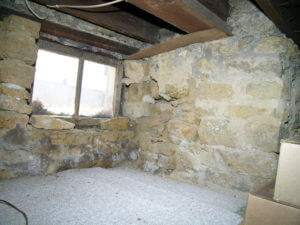
Common Foundation Construction Types and Problems
If you own your home and know that you have a foundation problem which requires repair but you are not sure where to begin searching for solutions, you can begin by identifying what type of foundation you have. There are many types of foundation construction which have been used over the last 150 years in this area of the country. Some of the most common foundation types include Cast in Place Concrete, Concrete Block, Fieldstone and Limestone, Red Brick and Telephone Tile.

Foundation Settlement
Not every settlement problem requires a repair. Determining if stabilization and lifting is required depends on the magnitude of movement, the distress being caused to the building, and the age of the building.

Leaning Concrete Walls
One of the most common problems we see with concrete foundation walls is that they are not properly secured or connected to the floor framing. This is usually caused by a lack of toe nails connecting the floor joists to the sill plate, an inadequate number of anchor bolts connecting the sill plate to the foundation wall, or improperly placed anchor bolts which cause the sill plate to split.
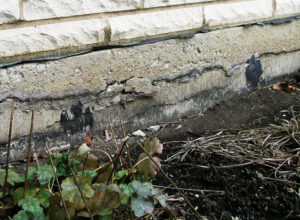
Horizontal Crack in Concrete Wall
The most likely cause of horizontal crack development in concrete foundation walls is corrosion of embedded reinforcing steel. As the steel corrodes it expands which causes the concrete to split apart and spall off on the surface.

Deteriorated Concrete Foundation Wall
Some early concrete mixes were made by hand on the construction site. Very often these concrete mixes did not contain an adequate amount of cement to prevent premature weathering and deterioration.

Concrete Block Walls – Bowing and Cracking
Concrete block was used extensively for foundation construction in the mid 1900’s. The number one problem we see with block foundation walls is inward bowing of the wall and cracking of the mortar joints.
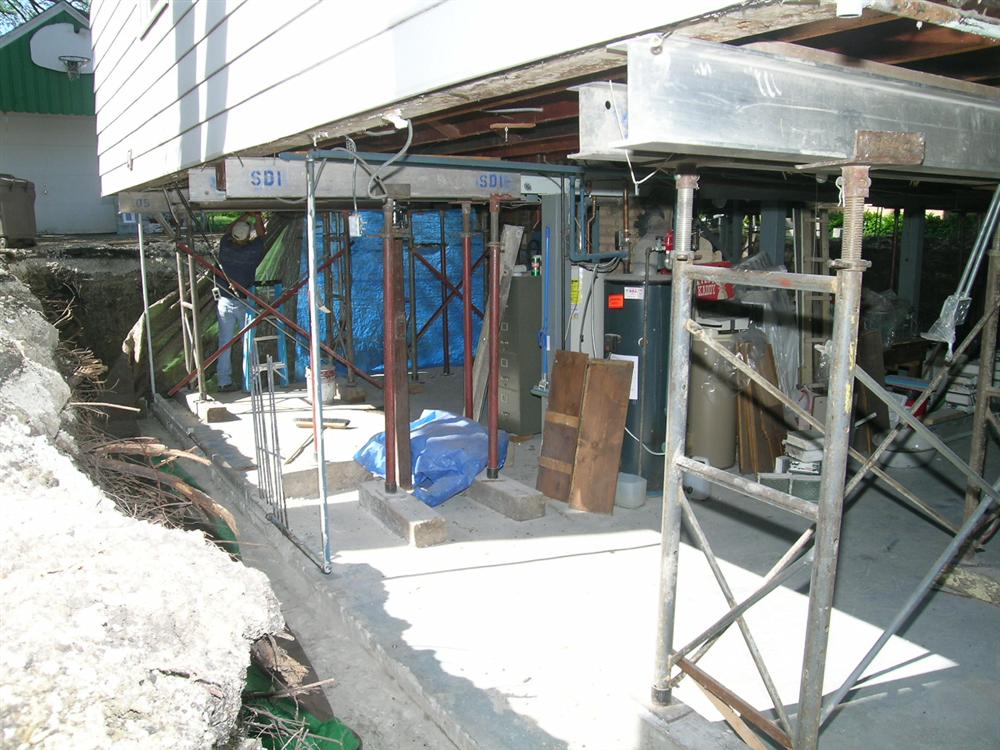
Foundation Replacement
In cases of severely deteriorated foundation walls, replacement may be the only viable option for repair. In most situations where foundation replacement is required, it involves only a partial replacement of 1 or 2 foundation walls.
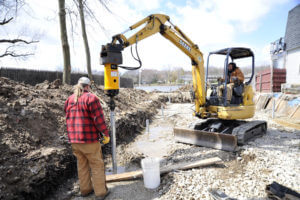
Helical Piles for New Construction
When encountering poor soil conditions on a building site it may be necessary to transfer the building loads to deeper more stable soils. Determining the most effective and economical solution to this problem will generally involve an investigation of the soil conditions which is typically done with a soil boring.
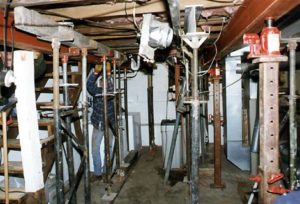
Beam & Column Replacement
Old deteriorating wood beams may be deflecting downward between columns and causing your floors to slope. Wood columns may also be deteriorating on the bottom and compressing causing the floors to move down.
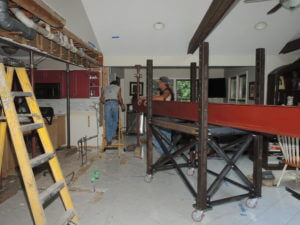
Bearing Wall Removal
Remodeling or opening up a space? Is there a load bearing wall in the way? Structural Dynamics can remove that load bearing wall and replace it with a properly engineered beam and supporting columns.

Floor Reinforcement
Interior walls which support floor or roof loads (a bearing wall) must line up over or very near a supporting beam line, a foundation wall, or another bearing wall. Improperly located bearing walls may cause excessive deflection in your floor system, over stressed floor framing, and cracked floor joists.
